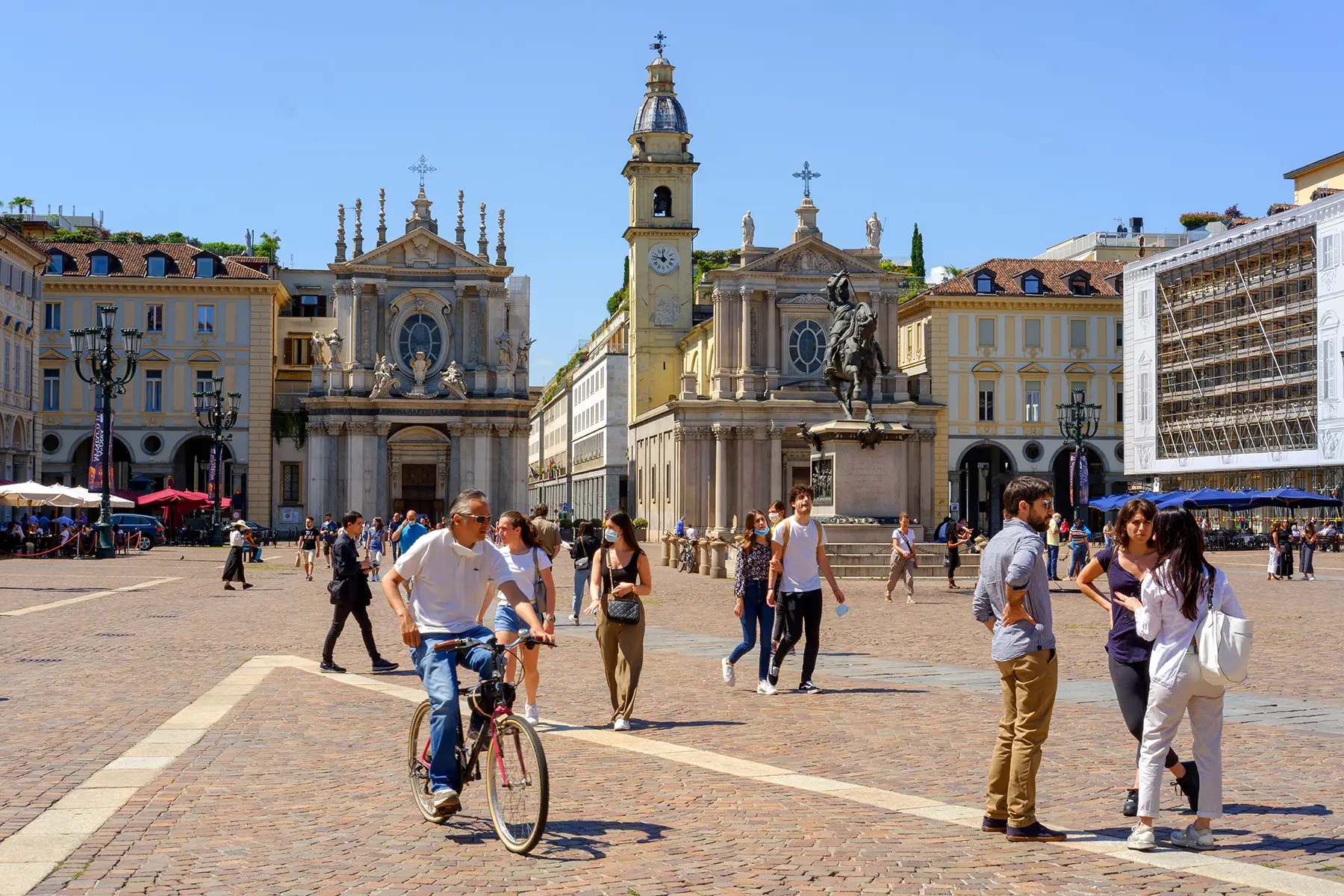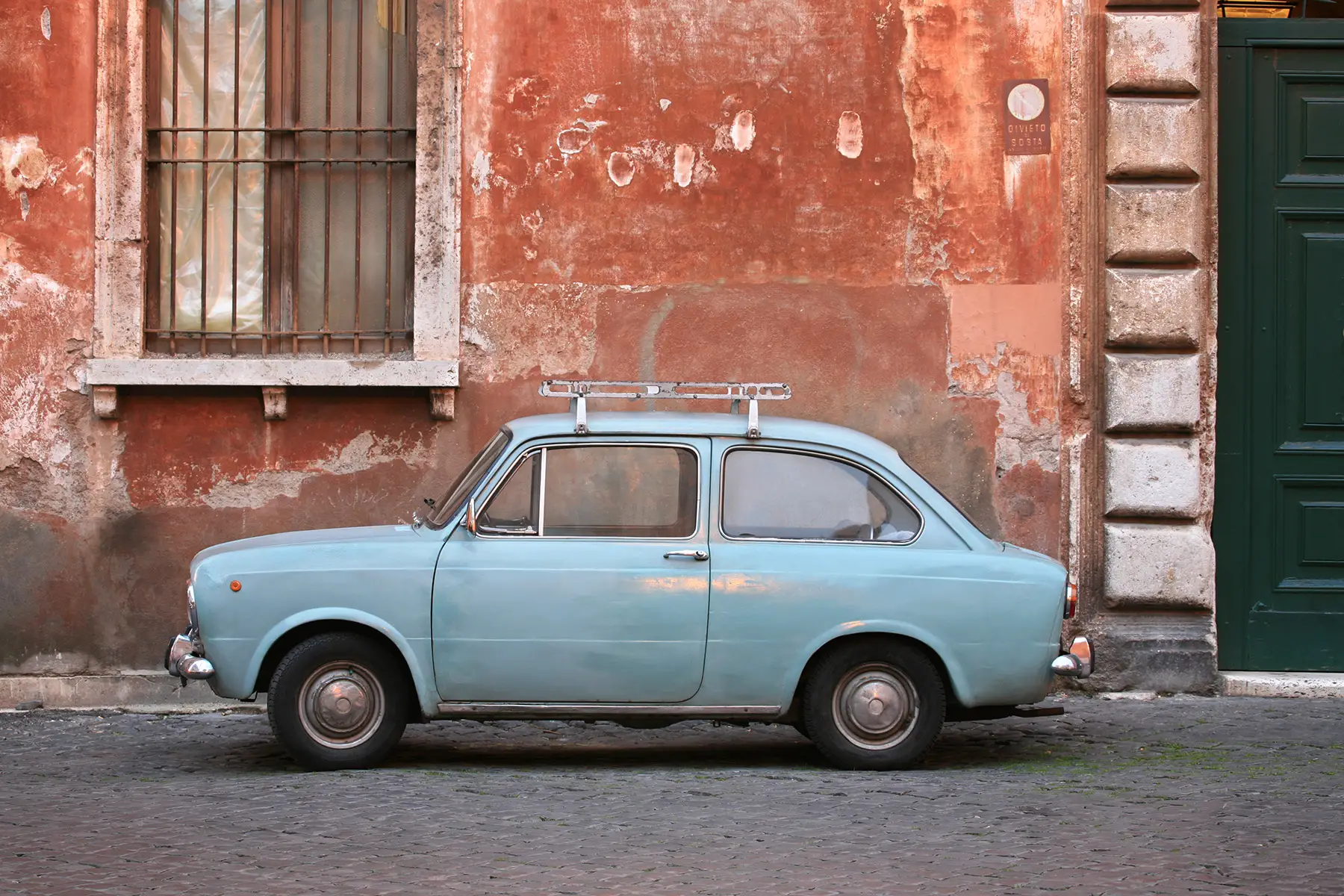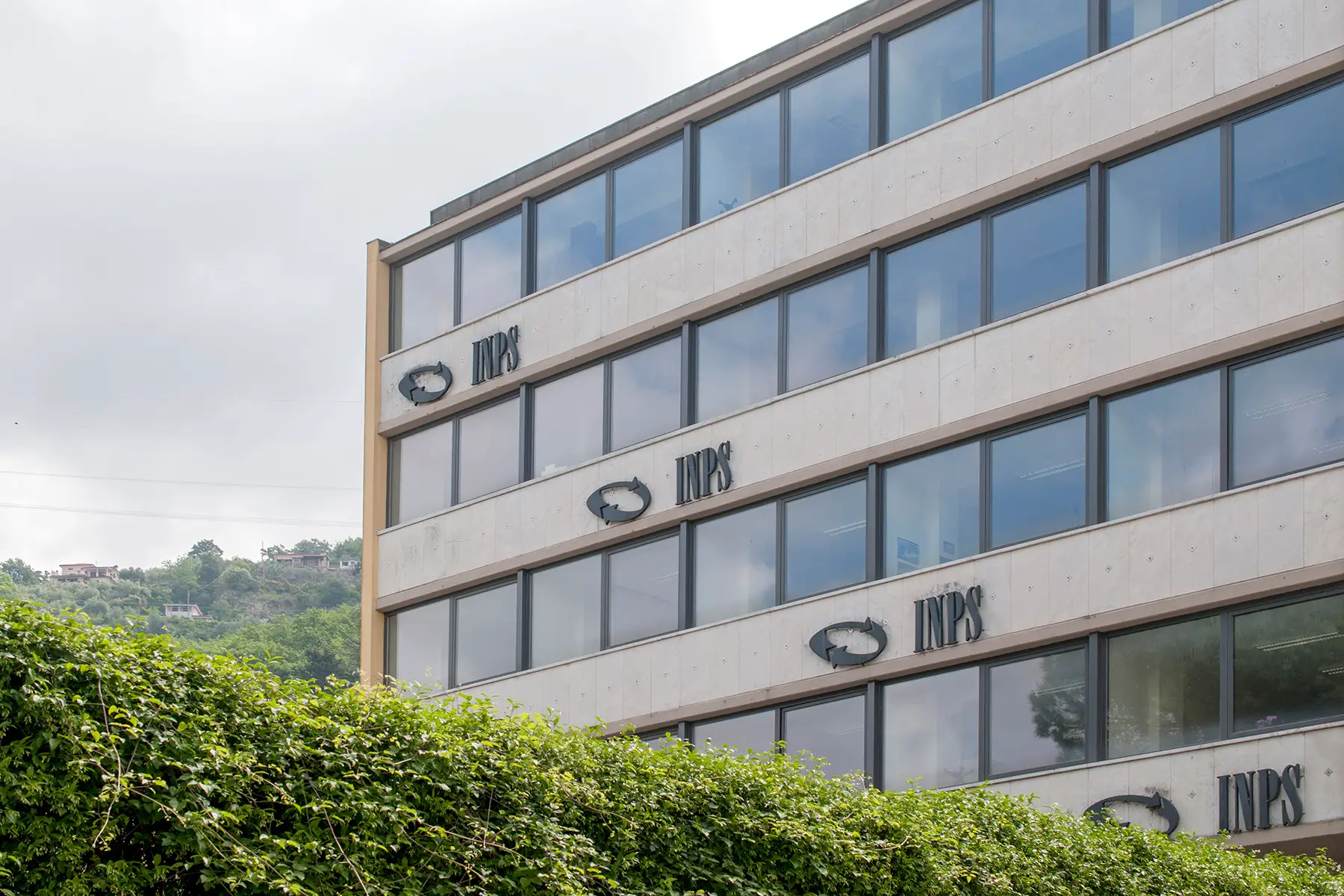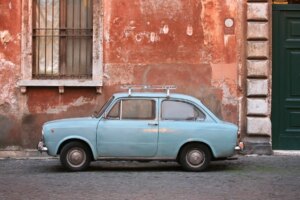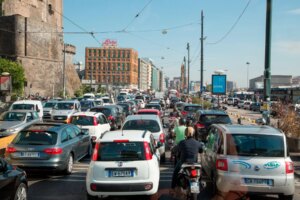You’ll need to get around when you move to Italy, and it’s worth weighing up your options before getting your Italian driving license or buying a vehicle. Sharing the ride is often the best way to travel, especially as Italy’s cities are well-connected by transport links. Read on to find out all you need to know about the planes, trains, and automobiles of Italy, with sections covering:
- Public transportation in Italy
- Italian public transportation apps and websites
- Trains in Italy
- Italian buses
- Taxis, Ubers, and other car services in Italy
- Long-distance coaches in Italy
- Italian airports
- Other methods of public transportation in Italy
- Italian public transport discounts and financial aid
- How disability-accessible is public transportation in Italy?
- How environmentally friendly is Italian public transportation?
- Public transportation safety tips in Italy
- Making a public transportation complaint in Italy
- Useful resources
Omio
Want to fly away from it all? Or maybe you're looking for a family adventure by train? Wherever you're going, Omio can help you find the best deals for your journey. This one-stop shop lets you compare a range of transport modes, explore new destinations, and buy tickets at the touch of a button. Wherever adventure takes you, get there with Omio.
Public transportation in Italy
You’ll be delighted to hear that public transportation in Italy is, broadly-speaking, fantastico. The variety of transport modes, cost of tickets, and efficiency make Italy’s transit network a top contender for getting around this beautiful country. Although travel by car remains the most dominant method of transit in Italy, in most years, around a third of Italians consider high fuel prices (PDF in Italian) as a reason to change their transport habits.
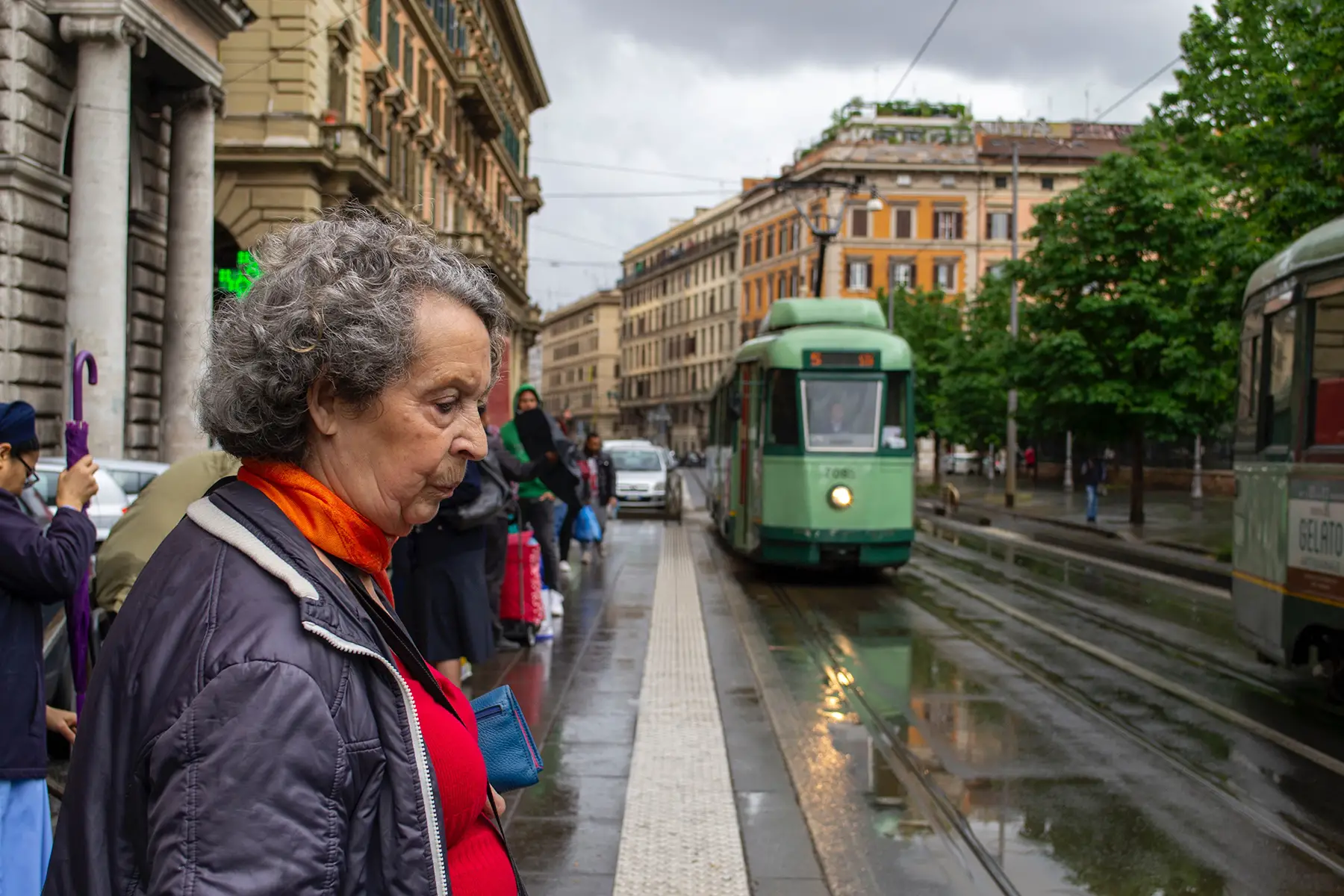
There are plenty of ways to get around Italy. For example, high-speed and late-night rail services mean you can explore the country conveniently and speedily. Several bus routes run by numerous companies can take you from A to B within cities, and seven Italian cities have metro systems. All cities have taxi services, and it’s generally easy to reach airports if you’re travelling further afield.
Italian public transportation apps and websites
One of the easiest ways to plan your commute or trip in Italy is to download a smartphone app onto your mobile phone. Some of the most useful ones include:
- General journey-planning apps: Like in many other countries, you’ll find that Google Maps offers route suggestions with public transport options across Italy. CityMapper also covers eight Italian cities, including Rome (Roma), Milan (Milano), and Naples (Napoli), so you can plan your route and check the status of the line you need. If you’re looking for an Italy-specific transport app, try myCicero for journey planning, booking tickets, and parking.
- Trains: For travel around the country, your best bet is to download the Trenitalia app from Italy’s official train operator. This application includes route planners, ticket-booking, service updates, and special officers. Italotreno is another handy app to find discounts on your train tickets and special offers.
- Apps for specific cities: Most of the apps mentioned above will help you get around your city. Still, it’s also worth knowing about local apps, as these can save you time and money. For example, if you’re living in Milan, ATM Milano lets you buy your tickets online and by SMS. TicketAppy is Rome’s local transport and ticketing app, and if you’re looking to get around the canals of Venice, download CheBateo.
- Long-distance travel: You’ll need a transport option that fits your budget and timetable for longer journeys. Omio lets you explore and book buses, trains, and flights, while Rome2Rio can help you mix modes to find the cheapest and fastest ways to get to destinations worldwide.
Once you’ve got these apps and websites stored, you should be good to reach almost anywhere in Italy on public transportation.
Trains in Italy
Italian trains are a reasonably reliable public transit method. The state-owned Italian Rail Network (Rete Ferroviaria Italiana – RFI) oversees rail infrastructure in Italy. Meanwhile, Trenitalia is the primary government-owned railway provider that operates trains connecting cities such as Venice, Rome, Florence, Naples, Bologna, and Milan.
Another private company, Nuovo Transporto Viaggiatori (NTV), operates high-speed services across the country. There is over 16,700km of train lines in Italy, connecting more than 2,000 stations.
Italy’s high-speed train services (Le Frecce – the Arrows) are a great alternative to flying or driving, as the network connects many of the country’s major cities. The trains hurtle along at speeds of up to 300km/h and are, on the whole, comfortable, affordable, frequent, and punctual. You’ll also find up to four classes on the train, should you want to travel with a little more luxury. They also have either a restaurant car or a refreshment cart and WiFi. There will usually be space for your suitcase, and although there is no charge for baggage, you should only pack what you can carry on board. However, some stations offer porter services, and you can also pay to ship your luggage to your destination.
Although slower than the high-speed train service, Italy also offers InterCity trains which travel medium to long-distance routes between many major cities. These trains are also comfortable, with two classes of seats available, onboard refreshments, and power sockets. Regional trains stop at many stations along the way if you want to take a more scenic route. All Italian trains have toilet facilities, but many InterCity services and regional trains do not yet provide WiFi.
Italian train tickets and costs
When traveling by high-speed rail or on an InterCity train, you must make a reservation and buy your ticket in advance. You can do this online on websites such as Treinitalia or a counter or self-service machine at the station. Generally, it’s cheaper to book your travel as far in advance as possible – Italian trains offer limited ‘Super Economy’ tickets, which sell out in advance. You can use a price comparison website like The Trainline that will show you all the options for your route and let you book tickets. On regional trains, you can simply buy a ticket at the station, validate it, and get on the train. No reservation is necessary.
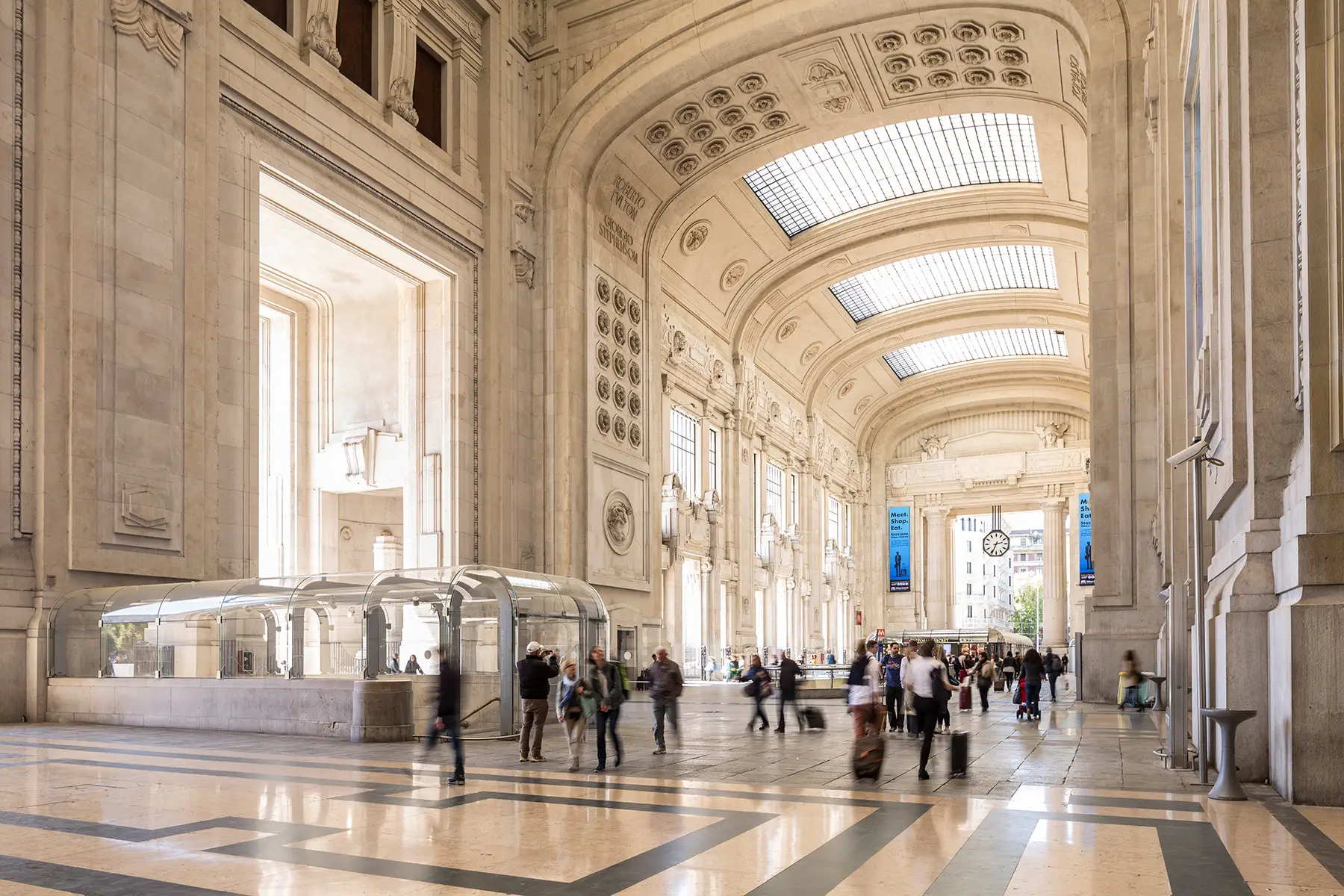
It’s important to remember to validate your ticket before you board your train. If you don’t, you may face a fine for failing to do so. If you’re caught on a train with the wrong ticket type, you’ll need to pay for the difference. You’ll also pay a penalty charge of around €8. If you don’t have a ticket, the conductor will charge you the total ticket price and most likely fine you about €50.
There are concessions for children between four and 15, seniors, and group bookings. There are also SMART fares which are cheaper but have restrictions on when you can travel. You can also purchase family travel passes and railcards. If you have a large pooch you want to bring along, it’s possible to book a ticket for them. For smaller pets, there is no charge.
Train timetables and maps in Italy
Although you can find train timetables, route maps, and arrival/departure boards at Italian rail stations, it’s always handy to have a portable version. ItaliaRail and ViaggiaTreno provide online maps and timetables for the Italian rail network. You can pick up paper schedules from European Rail Timetable or any station.
Trains are frequent throughout Italy – on popular routes, you’ll often find a departure every half hour. They generally begin around 05:00 and run until around midnight. However, you’ll also find night trains on offer throughout Italy, known as Intercity Notte (in Italian). They offer seats, sleeper booths, and sleeper cabins.
Italian train stations and stops
You can generally expect to board your train up to 40 minutes before departure if you’re at the train’s point of origin.
Most stations in Italy offer cafés, shops, toilets, information booths, and luggage storage offices. Ticket queues can be long at the station, so prepare to wait or book in advance. If you need help at the station, it’s best to ask at the information desk.
Italian city and regional trains
Seven cities in Italy have rapid public transit systems:
- Brescia: Gruppo Brecia Mobilitá
- Catania: Ferrovia Circumetea
- Genoa (Genova): AMT (in Italian)
- Milan: ATM
- Naples (Napoli): ANM (in Italian)
- Rome: Roma Metropolitaine (in Italian)
- Torino: Metropolitana Automatica di Torino (in Italian)
Depending on where you live in Italy, services begin between 05:00 and 06:00, and the final trains usually depart between 22:00 and midnight. These lines have regular trains: you’ll rarely have to wait longer than 15 minutes, and services tend to be more regular during rush hour. Similar to other cities in the world, you can buy tickets from each metro station.
International trains in Italy
Several options are available, when you want to travel to other European countries. The EuroCity service operates across international borders and will take you from Venice (Venezia), Verona, or Bologna to Innsbruck in Austria and to Munich (München) in Germany, with prices starting at around €10. You can also travel from both Milan and Venice to several cities in Switzerland, such as Zurich, Bern, Basel, and Geneva. An Express service on EuroCity connects Milan to Basel in Switzerland and onwards to Frankfurt in Germany.
The Railjet will get you between Venice and Vienna while the TGV service connects Turin and Milan to many of the cities in France.
Italian buses
Getting the bus is a great option for short journeys around your city or region. Most cities have regular bus services, but no single bus company oversees the whole country.
The downside to city buses in Italy is that they are slow. This is because traffic can be painful in urban centers. However, they can be a cost-effective and comfortable way to travel between regions. They have fewer stops and avoid the narrow roads and traffic common in major cities.
Bus tickets and costs
If you plan to use the bus frequently, you can get an abbonamento (bus pass). This can save you a lot of money – you can usually choose a monthly or annual option and order it through your local public transport company. Most bus services give discounts to young people and the elderly.
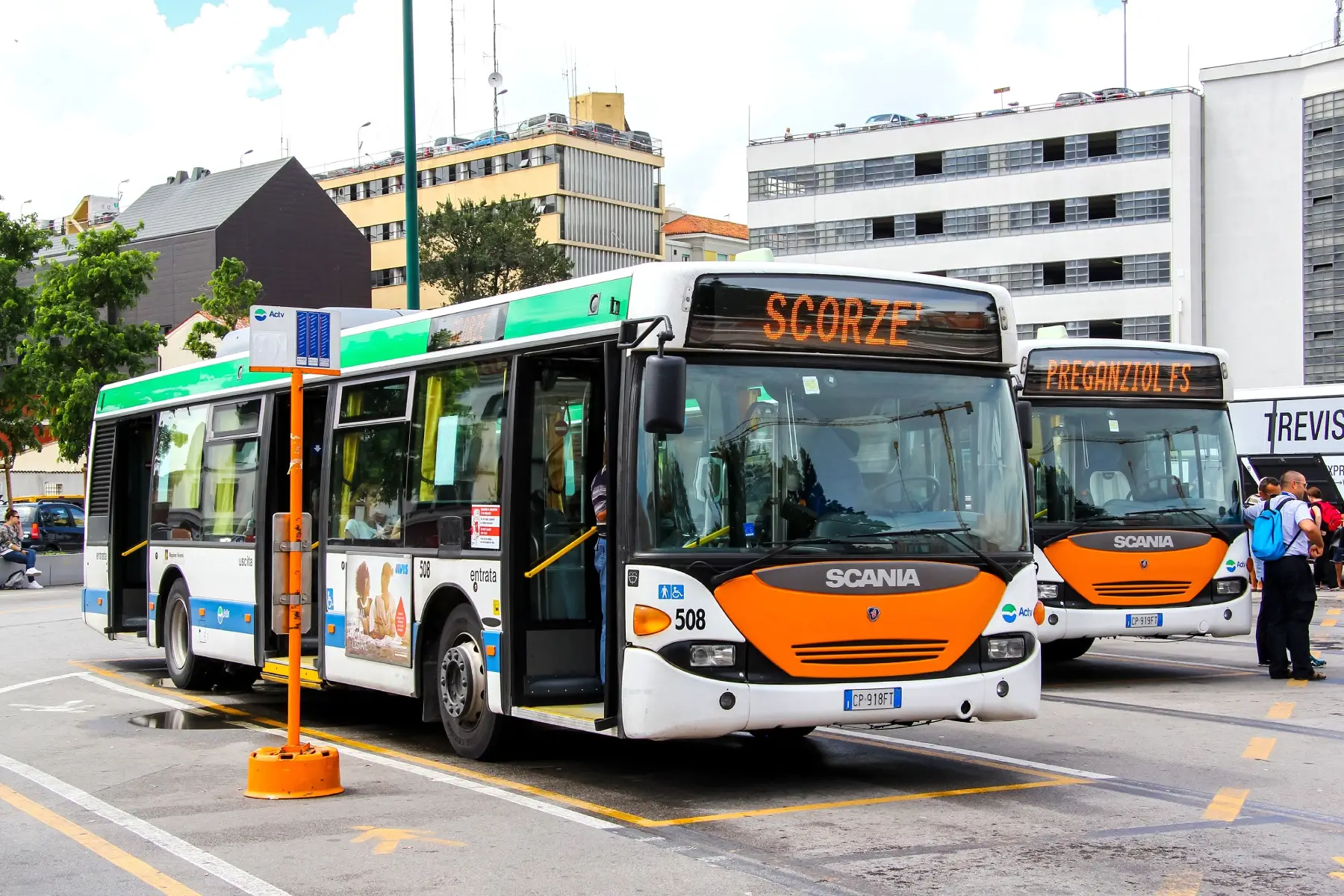
You can purchase regular bus tickets from local tabaccheria (convenience stores). Check beforehand whether you can buy a ticket on board the bus, and remember to validate your ticket. Also, most bus companies have apps, so you can sometimes buy your ticket directly using your phone.
Italian bus timetables and maps
You can usually find maps, routes, and timetables on the website of your local travel authority. For example:
Buses in big cities usually start around 06:00 and finish between 23:00 and midnight. Several cities run night buses, especially at weekends.
Bus stations and stops in Italy
You’ll recognize the bus stops in Italy as they’re similar to bus stops elsewhere. There’s usually a bench with a cover and information showing the bus route and a timetable. You’ll need to depart from a bus station if you’re traveling long-distance. In Italy, these are often near train stations. They usually have a central ticket office with electronic sign boards for each bus, destination, and departure time.
As with trains, you’ll need to validate your ticket once aboard the bus (unless you have a pass or an electronic ticket). You can find the machines on the bus, and they will stamp your ticket.
Taxis, Ubers, and other car services in Italy
If you can’t use public transportation in Italy to get somewhere get, you’ll find taxis readily available all over the major cities. One of the easiest ways to get around larger cities is by downloading a taxi app such as FREE NOW, which is used worldwide, so you might already be familiar with it. Another option is the Italian itTaxi. You can agree on the price and pay through the app, so you don’t have to worry about carrying around cash or getting ripped off.
Many cities in Italy also have metered taxis, which you can catch at a rank – they should have the official emblem of the city council on the side. There’s no guarantee that your driver will speak English, so unless you’ve learned some Italian, it’s always a good idea to have your destination written down.
Uber has faced backlash in Italy in recent years. Once only operating in Milan and Rome, recent changes mean that it will be more readily available, as it will integrate with itTaxi.
Car sharing is another option, with services like Carpoolworld and BlaBlaCar making your drive between cities more sustainable.
Long-distance coaches in Italy
If you are looking to travel on the cheap but with maximum comfort, a long-distance coach might be your best bet. Italy has several long-distance bus companies, including Cilento, Marozzi, Terravision, and Miccolis. You can book most of these bus routes through Omio, which is consolidated into one easy booking system and sends the tickets directly to your mobile phone.
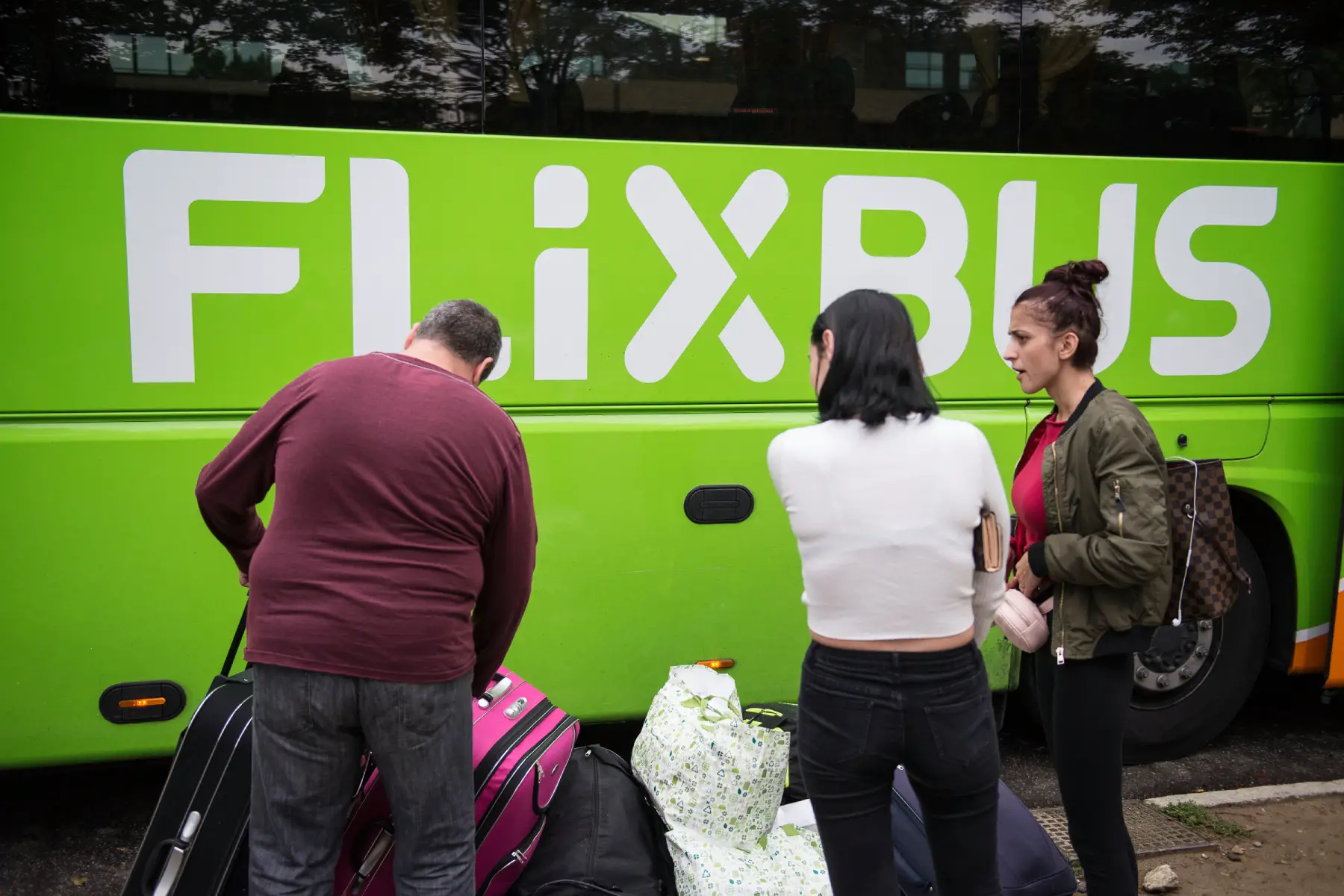
Now, for the comfort factor. Many long-distance buses have toilets, WiFi, and food and beverage options. So, coaches have the same facilities as modern trains for a fraction of the price.
As well as routes between Italian cities, there are plenty of options for international travel by coach. For destinations like Barcelona, Prague, or Vienna, Flixbus offers reasonable rates. You can also look into BlaBlaBus for even more routes.
Italian airports
Public transportation in Italy can get you pretty far, but flying is one of your options if you want to take a trip abroad. Italy has over 40 airports that handle passengers on commercial flights on local, international, and low-cost airlines. The Italian Civil Aviation Authority (Ente Nazionale per l’Aviazione Civil – Enac) oversees Italy’s aviation sector, and the national flag carrier is ITA Airways. A regional Italian airline, Air Dolomiti, is owned by Lufthansa and flies mostly to destinations in northern Europe.
There are several international airports in Italy:
Fiumicino Leonardo da Vinci Airport – Rome
Italy’s busiest airport, Rome Fiumicino Leonardo da Vinci, is also rated as Europe’s Best Airport thanks to its innovation and attempts to be more sustainable. It’s the main hub for flag carrier ITA Airways. It has numerous international and domestic airlines and routes operating out of it.
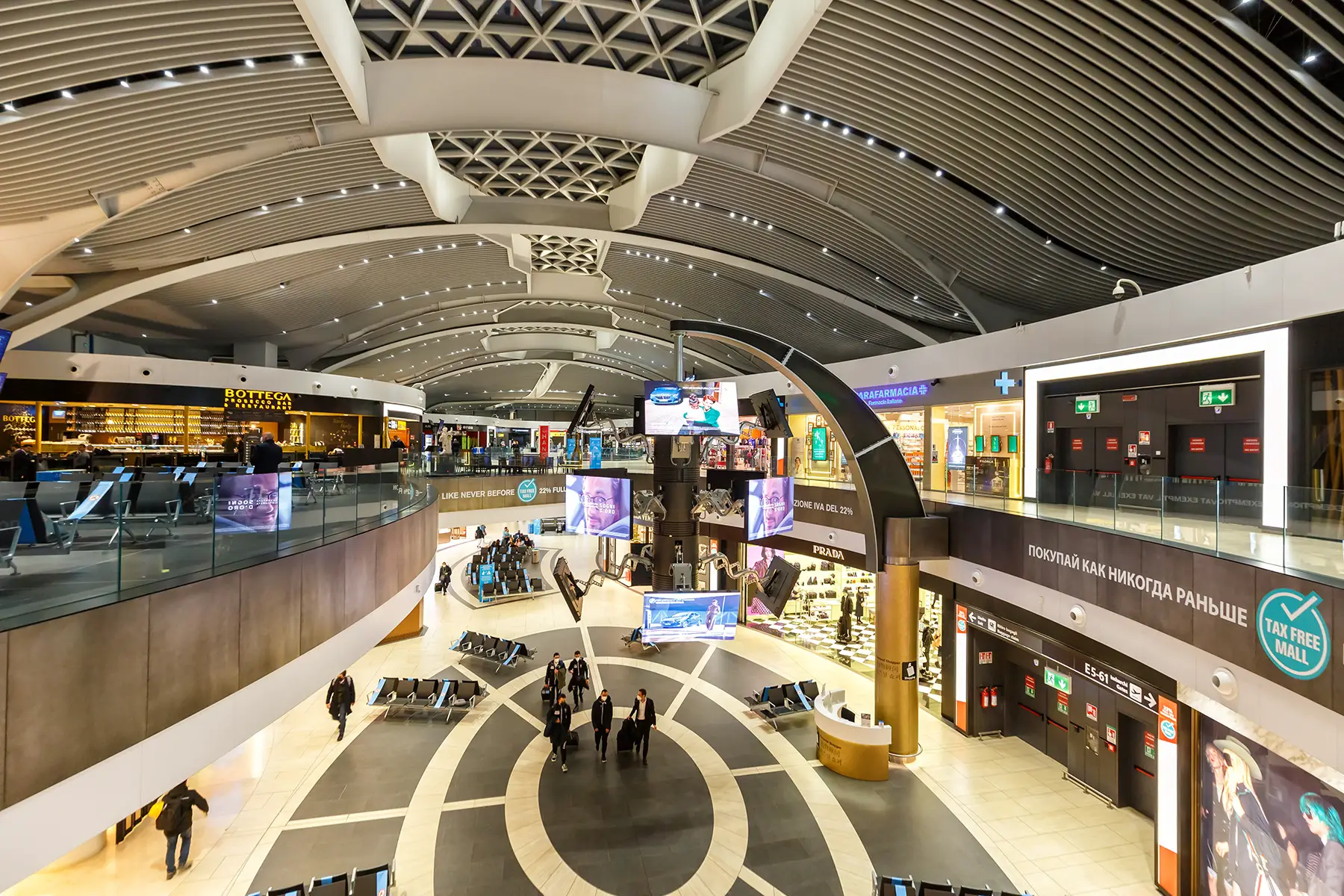
Rome Fiumicino airport has two terminals open to commercial passengers: terminals 1 and 3. Across the terminals, you’ll find many facilities, including tax-free shopping, places to eat, a chapel, a prayer room, pharmacies, and children’s play areas. The airport is 32km away from Rome’s city center, but to get there, you have several options:
- Bus: several local and shuttle buses between Rome Fiumicino and the city center departing regularly throughout the day
- Taxi: authorized taxis at the airport offer fixed fares to specific destinations (e.g., about €50 to Rome city center)
- Train: Rome Fiumicino airport is served by the Leonardo express, which departs for Roma Termini every 15 minutes, and FL1 regional trains to other stations in the city
- Via car or scooter: travel along the Grane Raccordo Anulare and A91 motorway
You can learn more about parking and hiring a car on the airport’s dedicated travel pages.
Malpensa Airport – Milan
Milan Malpensa Airport is northern Italy’s largest international airport, located about 50km from Milan city center. It offers numerous routes to destinations worldwide from its two passenger terminals. As is the case at Rome Fiumicino, it has excellent facilities for eating, drinking, and more.
Getting to and from the airport is relatively straightforward. Should you want to go by public transport, Terravision, Autostradale, Caronte (in Italian), and Air Pullman all offer bus routes. The fastest option is the Malpensa Express train, which stops at both terminals and calls at Milan Cadorna, Milan Central, and Milano Porta Garibaldi.
Bergamo Airport – Milan
Also known as Orio al Serio International Airport, Milan Bergamo serves Bergamo and Milan. Although it offers international routes, most of its destinations are in Europe, western Asia, and North Africa. The airport has plenty of parking, places to eat, and prayer rooms. You can reach it via shuttle bus, bus from Bergamo station, taxi, or by driving.
Marco Polo Airport – Venice
Venice is one of the world’s top tourist destinations. If you decide to fly there, you’ll probably land at Venice Marco Polo Airport. Located just eight kilometers from Venice, you’ll find flights to and from global destinations.
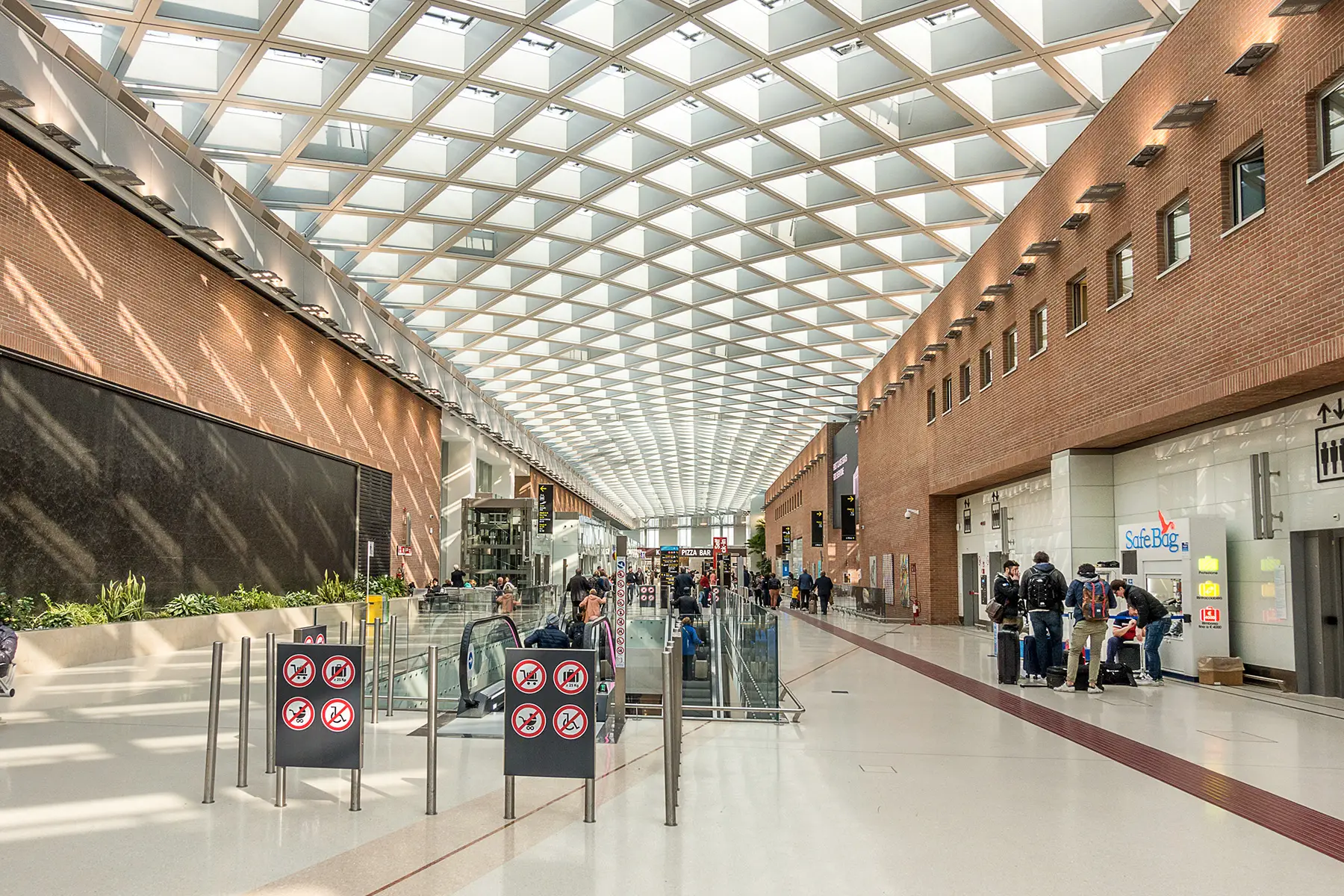
There are plenty of ways to get to and from the airport, including buses, trains, taxis, and cars. Of course, Venice is famous for its canals, so water buses and private boats are two options to make the most of this watery city.
Naples International Airport
Naples International Airport (Aeroporto Internazionale di Napoli) is Southern Italy’s busiest airport. Its network mainly consists of European destinations, but flights also go to some destinations in North America and northern Africa. You can reach the airport by shuttle, public bus, taxi, or driving.
Other methods of public transportation in Italy
Traveling by boat is not just for Venice. Ferries are a wonderful way to see the islands of Sicily and Sardinia or to go between the scenic port towns of Italy’s seemingly endless coastline. Ferries can be seasonal – Naples to Positano runs from May to September, and Salerno to Amalfi ferries go between April and October. Meanwhile, ferries from Naples to Capri run year-round, as does the route from Rome Civitavecchia to Cagliari.
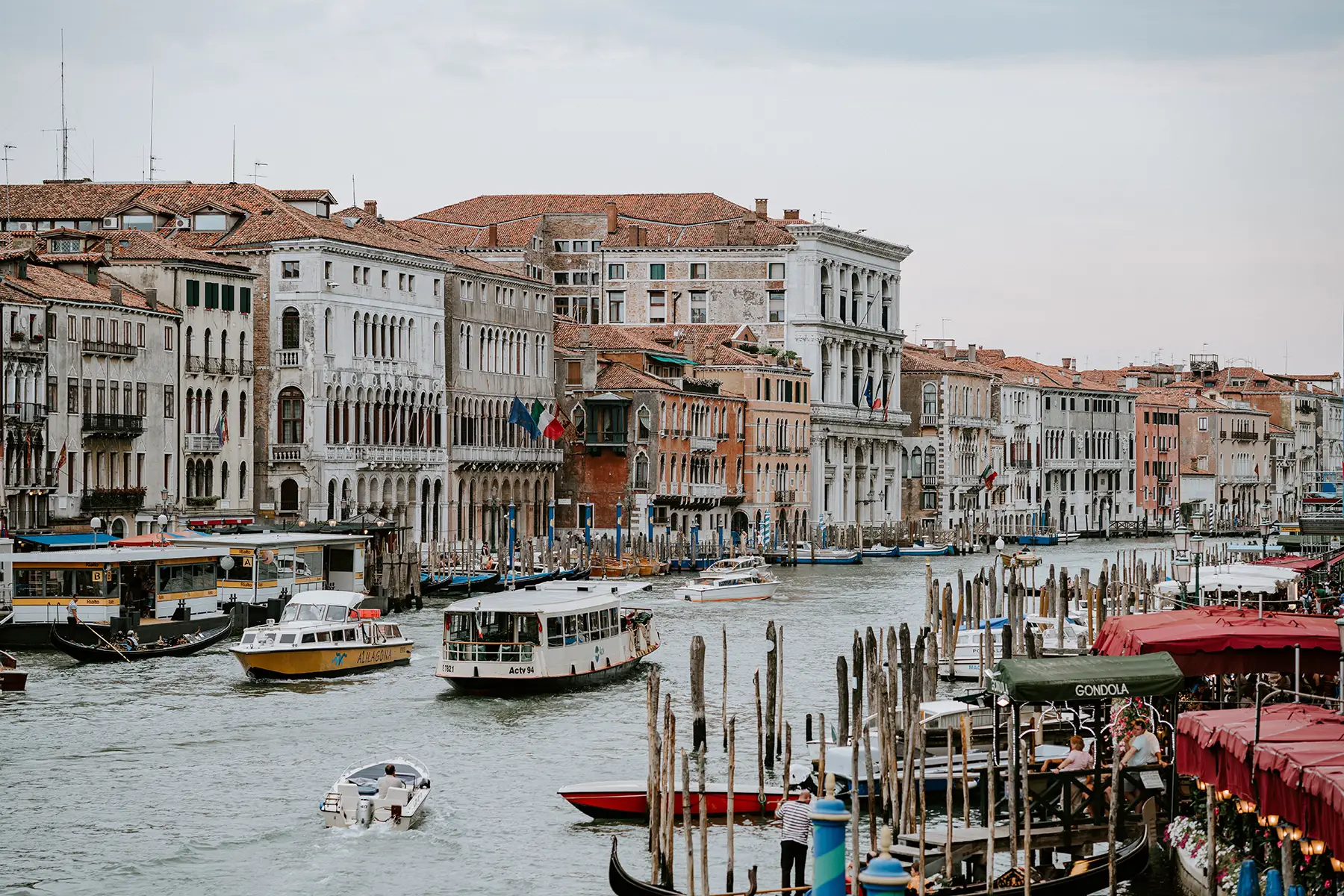
There are many more routes to discover, and the ferry can be an exciting way to go. Don’t discount traveling by sea when you’re planning your route. Ferry Hopper provides an easy way to book tickets and check out destinations.
And you’re not limited to Italy! You can also take ferries from international destinations like Croatia, Spain, Corsica, Greece, and Tunisia.
Italian public transport discounts and financial aid
If you travel by train, you’ll be happy to know that plenty of discount cards are available. For example, if you’re between 12 and 26 years old, you can use a Green card (Carta verde), which saves 10% on national trains and 25% on international routes. Over-60s can apply for the Silver card (Carta d’Argento). The card is valid for one year and costs €30 (free if you’re over 75). This saves you 15% on train tickets within Italy and 25% on international rail routes.
Typically, children under four ride free on both trains and buses, while those four to 11 can purchase a child ticket. There are often family discounts, so look out for those when purchasing your tickets.
There aren’t usually discounts for disabled persons when purchasing tickets. However, you can apply for a Blue card (Carta Blu) which provides reductions for Italian residents receiving mobility allowance. Italy also offers €60 public transport bonus for students and workers earning below €35,000 as part of an aid package to mitigate the ongoing cost of living crisis.
How disability-accessible is public transportation in Italy?
Italy doesn’t fare well overall for its accessibility for people with disabilities, particularly Rome, with its sporadic accessible buses and difficult-to-navigate cobbled streets, which are often narrow and strewn with parked cars and scooters. In addition, many Metro stations still lack access for people with limited mobility, and elevators are often out of order. However, many larger stations offer assistance for disabled people, so it’s always worth contacting them before traveling.

Italy has taken small steps, such as installing ramps at museums and other tourist attractions in cities like Rome, Venice, and Milan. There is still a long way to go before Italy gets an accessibility stamp of approval, but gradually, things are improving. Accessible Italy is a non-profit that provides tours and other services for people with disabilities, including equipment rental and information services.
How environmentally friendly is Italian public transportation?
Although Italy isn’t well-known for its green credentials, some initiatives are improving the sustainability of its public transport. About 15% of Italy’s urban buses are ‘zero emissions buses,’ lower than the European average of 23% but more than Germany, Spain, and Portugal. By 2026, Italy hopes to implement its National Strategic Plan for Sustainable Mobility, which would see an investment of €3.6 billion for low-emission buses, electric and hydrogen-powered trains, and low-emission vehicles for the Fire Department.
Other initiatives to improve sustainable mobility in Italy include:
- Promoting cycling through better infrastructure and maintenance.
- Reducing the use of cars by at least 10% by investing €3.6 billion in public transport for metropolitan areas.
- Increasing the number of charging stations for electric vehicles.
Public transportation safety tips in Italy
Italy is generally a very safe country where violent crime is decreasing. However, petty crime is common, especially in busy tourist areas. Keep an eye on your bags, as pickpocketing and bag snatching occur often.
The risk of being harassed on crowded buses does exist, so traveling with others and staying aware of your surroundings is a good idea on public transport in Italy.
Making a public transportation complaint in Italy
Similar to other European countries, to make a complaint, you will contact the individual transport company and lodge your complaint with them. You may also be eligible for a refund or other discounts if your train is late by a certain amount of time, particularly on sleeper trains, but policies differ between companies.
If you are unhappy with the response, you can escalate it to the National Enforcement Body or the European Online Dispute Resolution platform.
Useful resources
- Trenitalia and Italiarail – two sites for finding information about Italian trains and booking tickets
- Transport authority (Autorità di Regolazione dei Transporti) – for information about your rights and to make a complaint
- Bonus Trasporti – to learn about the public transport discount for students and low incomes
- Trenitalia discount cards – find out age-based discounts


